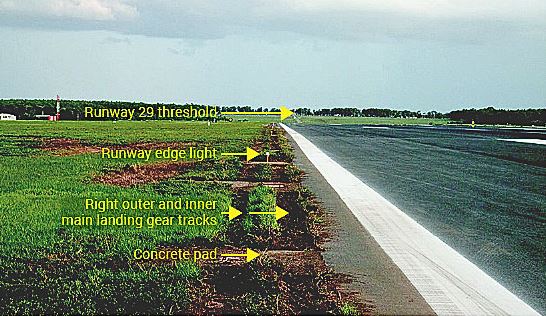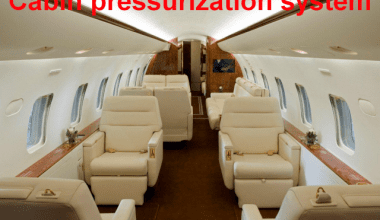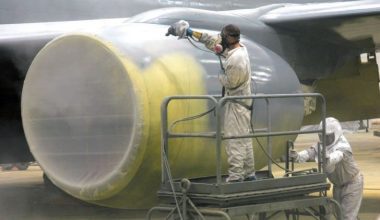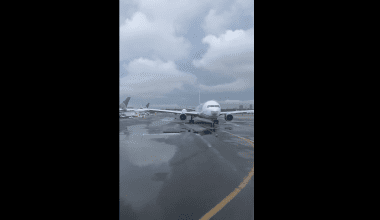Every airport providing the flight operation has to equip its runway with a lighting system. The airport lighting system helps the pilots land and take off easily at night and in low visibility conditions. The most critical part of the airport lighting system is runway lights that ensure a safe landing and takeoff with visual aids. The lighting system at airports should be clearly visible and should be functional during every type of operating condition and, of course, ICAO rules compliant. The runway marking signs and lighting are the core components at the airport that allow the aircraft to navigate the surface area and avoid any kind of incursion on the runway.

Runway centerline lights
It is a component of the airport lighting system, guide the airplanes through runways and taxiways at night or adverse weather conditions where the navigation becomes necessary without clear visuals on the runway. The runway’s centerline lights indicate the middle position of the runways, whereas the edge lighting, which compromises white lights on both edges of the runway, indicates the runway edges so the pilot can navigate properly without any mishap.

The centerline lighting system on the runway is generally in white color near the approaching end of the runway and transits to alternating white and red lights in its length; at 3,000 feet from the end of the runway, the centerline lights in the runway remain white. And, the centerline lighting at the final 1,000 feet of runway is indicated by all red centerline lighting systems. Basically, the runway centerline lights are placed between the distances of 50 feet apart from each other and are required for all CAT II and CAT III runways and even for some of the CAT I runways depending on the operating hours and size of the aircraft.
Other Runway Lighting Explained
There are generally nine types of lighting systems practiced in the aviation industry, from the touchdown lighting that indicates the touch zone for the incoming aircraft to the PAPI lighting system that helps the pilot to keep track with the correct course.
1. Approach Lights
The approach lights at the runway are the first lights that the pilot will reach during the landing process. Unlike other runway lightings, the approach lighting system is positioned at the approach area on the runway and stops at the threshold. The purpose of the approach to light the runway is to indicate the actual direction of the runway and allow the pilots to visualize the touchdown zone from farther distances. The size of the approach light on the runway extends from 2,400 feet to 3000 feet into the approach area for precision on instrument runways. In contrast, the non-precision instruments runway has approach lighting spaces that cover an area of 1,400 feet to 1,500 feet. The lighting system that shows the direction of the runway has a different approach lighting system; the simplest form has a cross design and usually consists of 17 approach lights that can be visible to the pilot crew even from farther distances.

Further, part of the approach lighting system, the threshold approach lights that flash green color are the unidirectional type of lighting system in the runway that identifies the beginning part of the touchdown point for the aircraft. Although it is not exactly a touchdown point, the threshold approaching lights mark the start of the safe landing part on the runway. On the other hand, the touchdown zone is the lighting system that consists of groups of three white lights placed to the right and three white lights placed to the right of the runway centerline lights. The touchdown lighting zone starts 100 feet before the runway threshold and continues throughout the 3,000 feet or mid-point of the runway.
2. Runway End Lighting
The ending runway point at the airport is marked with runway end lighting or runway threshold identification lights(RTIL). The lighting system that marks the end of the runway extends all the way across the width of the runway at either of the ends. These are the white flashlight, unidirectional which identifies the beginning of a runway; unlike the other lighting system of the approach light, the runway end lighting is installed in just a pair, one at each side of the runway. This lighting system lets the pilots know about the endpoint of the runway.

With the full length of the runway stretching in front of them. On the opposite end, the lights appear red, which informs the pilots that they are approaching the departure end of the runway and the whole runway they left behind them; the pilots should either take off or pull back before reaching the runway end lighting if there are any sort of issues with the aircraft.
Also, the runway end identifier light(REIL) is placed on either side of the runway at the endpoint. These endpoint identifier lights flash green lights indicating the approach of the end of the runway to identify pilots where to land or validate that they are not running short of the runway.
3. Runway Edge Lighting
The pilots need to have a visual guide on the actual width of the runway, so they don’t end up going off the rails. The runway edge lighting system ensures that the airplane is on the right course on the runway; generally, the runway edge lights are a series of lights located on the left and right side of the runway, illuminating the safe path of the runway for a safe landing.

The runway edge lights are of different colors and are usually bidirectional; the most used runway edge lighting system are white/white lights, white/yellow, white/red, and yellow/red. According to FAA rules, there shouldn’t be more than 200 feet distance between each of the individual runway edge lighting systems, except at the intersections between the runway and taxiway or even another runway where up to 400 feet gap between the runway edge lighting system is authorized.
4. PAPI and VASI Lighting
The PAPI and VASI lighting system stand for Precision Approach Path and Visual Approach Slope Indicator, respectively give the pilots visual indicators of their glide slope. Suppose the area before the runway is unlit and is featureless. In that case, it can be quite hard for the pilot crew to visualize the glide slope, the PAPI set of four lights in a row placed perpendicular to each other to one slide of the runway gives the pilot indicator of their glide slope. Similarly, unlike the one-row lighting system like PAPI, the VASI lighting system uses two sets of two lights, one set placed in front of another. The PAPI and VASI lighting system can be located either on the runway’s left side or the right side.

Generally, the PAPI lighting system includes five possible lighting combinations, whereas the VASI lightning system just deploys three lighting combinations. In the PAPI lighting system, when two lights are white, the other two will be red, whereas, for the VASI lighting system, the closet light to the approach end will be lit whiter, whereas the backset will be red.
5. Taxiway Lights
The taxiway lights are the blue-colored runway lights that are installed on taxiways and aprons. The taxiway lighting system helps the pilots to visually identify and locate the intersection of the runway and taxiway at night or during low visibility conditions. The taxiway lights are not so bright compared to other lighting systems on the runways, and most are invisible from the air. The taxiway lights don’t need to be as bright as other indicator lights at the airport because the pilots only need them after they land on the runway.

In general, the taxiway lights are fixated with alternating green and yellow lights that start off from the centerline of the runway connecting the centerline of the taxiway. The taxiway lighting system is important when existing runway onto a taxiway or existing from taxiway to runway for takeoff.
Runway Lighting Requirement
The runways that have been licensed for the night flights must contain the runway lighting system that at least defines the extent of the runway for the approaching and taking off aircraft. The runways that are not equipped with the runway centerline lights use the caution zone lighting to provide the visual alert on the approaching runway end.
- Runway edge lights, the omnidirectional lighting system should be located along or just beyond the edges of the area to be used as a runway, with the white lighting system except for certain exceptional cases.
- The runway end lighting can be used for showing the entire length of the stop way beyond the designated runway; the red unidirectional edge lights visible only in the direction of the runway should be provided at intervals until a further transverse line marks the end of the runway.
- The runway centerlines lights will always be white except in the event that color coding is provided at the runway to indicate the approaching end of the runway, 900 meters white lights beginning from the runway end, and red centerline indicators for the last 300 meters of the runway.
- The Touchdown Zone(TDZ) lighting must be provided to the runways that are available for use even in low visibility circumstances to enhance the touchdown areas’ identification.
- The level of the intensity of the runway lighting system can be modified to be suitable for the full range of horizontal visibility and ambient light in the way that the runway is intended to be used.








